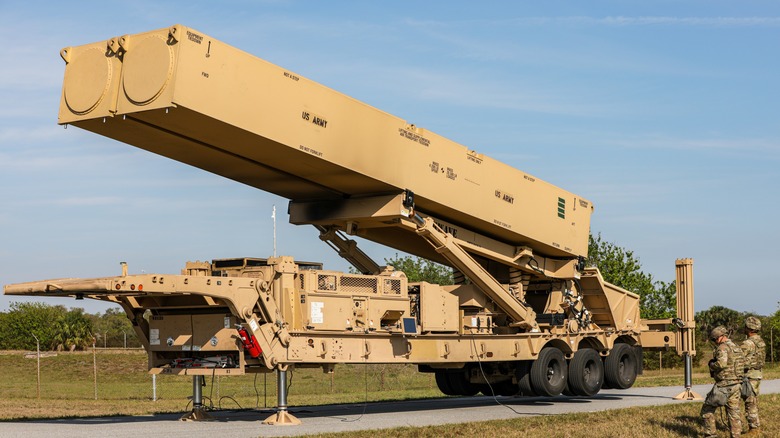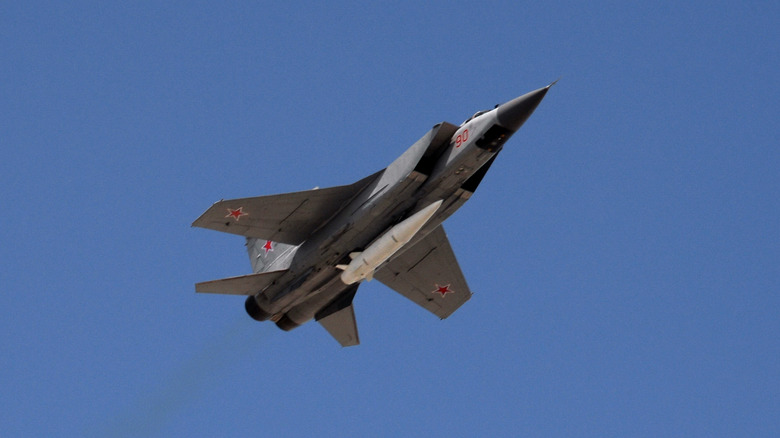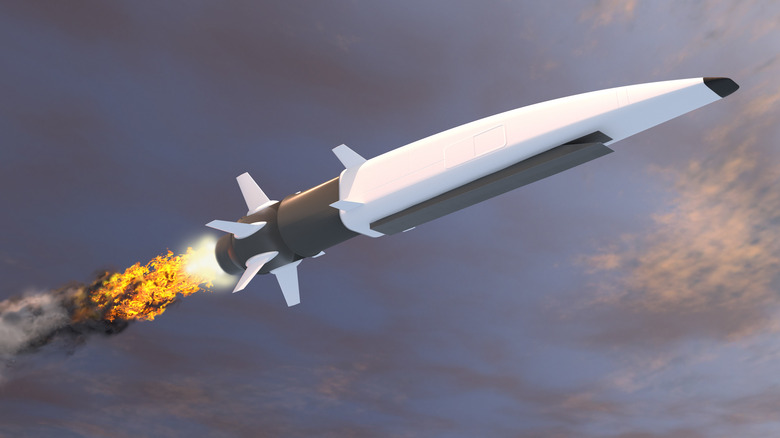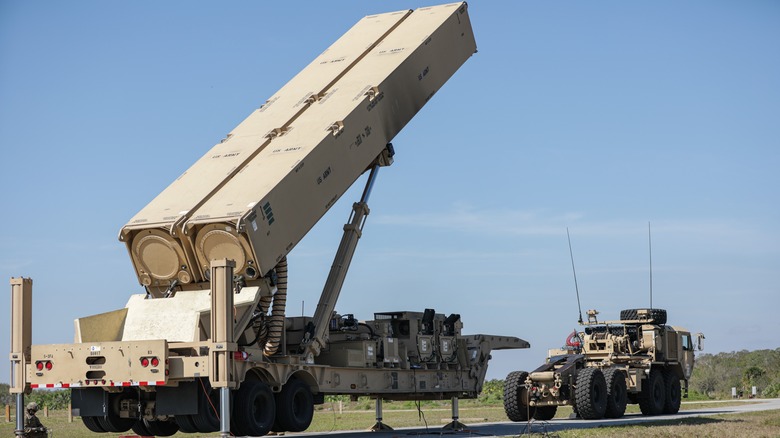Five-Times Faster Than The Speed Of Sound: Why Hypersonic Missiles Could Change War Forever
Since 2013, the United States Navy has deployed the Raytheon-manufactured SM-6 surface-to-air or anti-ship missile. It's used by naval forces in an offensive or defensive role, meaning that whatever needs to be knocked out of the sky, destroyed on the land, or sunk in the ocean, the SM-6 is up to the task. It's powered by a solid-fuel rocket motor that can reportedly allow the missile to reach speeds of over 2,200 miles per hour, considerably faster than the older Tomahawk missile. While the Tomahawk is accurate and still in service, it tops out at about 550 miles per hour.
Not that speeds in excess of 2,000 miles per hour are slow, but what if there was a faster weapon delivery system? That's where hypersonic missiles come in. "Supersonic" defines any object that exceeds the speed of sound, a.k.a. Mach 1. "Hypersonic" pertains to objects that transcend Mach 5. Such a delivery system has the potential to cut down on defensive or offensive strike times by a significant margin in the event of a missile, aircraft, or naval attack by an enemy force.
Hyper fast and hyper accurate
In the simplest terms, a hypersonic weapon consists of three main components: a launch platform, a booster rocket, and a hypersonic vehicle, the part that actually contains the weapon. Once the launch platform — which can either be a truck, aircraft, or naval vessel — is in place and has chosen a target, it launches the booster rocket.
The booster rocket, attached to the hypersonic vehicle, reaches a predetermined altitude near the target. Then, the booster detaches, the hypersonic vehicle activates, reaches its top speed, and then "glides" to the target. This system allows the payload to be more maneuverable than a conventional ballistic missile which follows a predictable trajectory to the target.
But that's way easier said than done. As of now, the United States has been able to deploy one Long-Range Hypersonic Weapons system through the 5th Battalion, 3rd Infantry Regiment of the U.S. Army. Reportedly, the People's Liberation Army of China has also deployed a hypersonic weapon as far back as 2019. This weapon, known as the DF-17, has a top speed between Mach 5 and Mach 10. Additionally, Russia is said to have used its own "Kinzhal" hypersonic munitions against Ukraine. Although Ukraine claims to have shot the missiles down. It should be noted that in the case of Russia's hypersonic weapons, there are serious doubts about whether or not they fit the bill as it's closer in operation to air-to-ground ballistic missiles, according to the Brookings Institute.
Testing difficulties
Missile launch platforms and booster rockets are nothing new, but the "hypersonic" part is bleeding edge. To even get to speeds exceeding five times the speed of sound, the weapons system needs to deploy a scramjet. Scramjet technology is still in its infancy but is reportedly much simpler in construction and significantly faster than commonly used jet engines and a lot of existing rocket boosters.
Reaching several thousand miles per hour comes with its share of difficulties. According to Lockheed Martin, a defense contractor working on its own hypersonic weapons, even communicating with the missile itself is a challenge. Even if you're able to retain control of the weapon, it may still succumb to damage from the heat generated from traveling at such high speeds.
Hypersonic weapons systems represent a new frontier of combat emerging in the years following the immense buildup of arms during the Cold War. Whether or not these weapons will be used in combat is unknown, and it's yet to be seen if such a system is even effective or viable in the long term. But as with any new weapons system, especially one that uses relatively unproven technology, it may be prudent to display a healthy bit of skepticism on news of deployment in combat.
A potential gamechanger
Hypersonic weapons have the potential to greatly change how combat is waged if they become a major part of the modern battlefield. Even more so than existing long-range strategic bombers or ballistic missiles. A hyper-maneuverable weapon traveling upwards of 10 times the speed of sound gives targets little time to react. This would be beneficial to the attacking force and devastating for the ones being attacked.
However, with the Long-Range Weapons System already in the U.S. Army's arsenal, it's more than likely that even more advanced systems are in development to defend against such missiles. Reportedly a satellite defense system to counter said hypersonic threats will be operational by as soon as 2025. But that's strictly hypothetical as, to date, hypersonic weapons have not been used in any large-scale fighting by any force around the world. But if all goes to plan, hypersonic weapons will soon be part of the 21st-century battlefield, along with drones, cyberwarfare, and proposed directed energy weapons.



